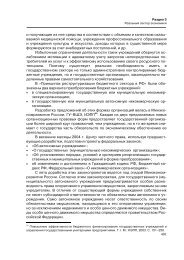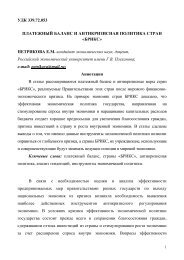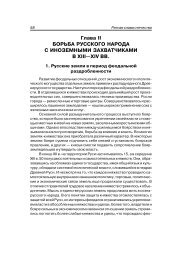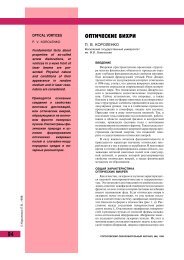Ensuring Strategic Stability in the Past and Present:
Ensuring Strategic Stability in the Past and Present:
Ensuring Strategic Stability in the Past and Present:
Create successful ePaper yourself
Turn your PDF publications into a flip-book with our unique Google optimized e-Paper software.
differ considerably from test-launch trajectories—<strong>and</strong> give little signal regard<strong>in</strong>g <strong>the</strong> trajectories’end-po<strong>in</strong>t target on <strong>the</strong> territories of <strong>the</strong> o<strong>the</strong>r side. Many experts believe that this fact also <strong>in</strong>creases<strong>the</strong> level of uncerta<strong>in</strong>ty concern<strong>in</strong>g <strong>the</strong> accuracy of ICBMs, SLBMs <strong>and</strong> o<strong>the</strong>r missiles. 31There are also <strong>the</strong> problems associated with <strong>the</strong> target<strong>in</strong>g of a s<strong>in</strong>gle target by several warheadsto guarantee <strong>the</strong> target’s destruction—<strong>the</strong> so-called warhead “fratricide effect”—as a result of <strong>the</strong>reciprocal <strong>in</strong>fluence of a heavy surface-burst by <strong>the</strong> previous warhead on <strong>the</strong> next one, due tosoil particles upcast <strong>in</strong>to <strong>the</strong> atmosphere. That is to say, once <strong>the</strong> first warhead explodes, <strong>the</strong> soilparticles that are upcast <strong>in</strong>to <strong>the</strong> atmosphere by <strong>the</strong> explosion will <strong>in</strong>evitably obstruct <strong>the</strong> p<strong>in</strong>po<strong>in</strong>tdestruction of <strong>the</strong> target by <strong>the</strong> follow<strong>in</strong>g warheads. However, any trustworthy evaluation of thisfratricide effect would be an extremely difficult task. 32Many experts also believe that such an evaluation is practically impossible, by virtue of <strong>the</strong> existenceof <strong>the</strong> Moscow Treaty Bann<strong>in</strong>g Nuclear Weapon Tests <strong>in</strong> <strong>the</strong> Atmosphere, <strong>in</strong> Outer Space<strong>and</strong> Under Water (<strong>in</strong>clud<strong>in</strong>g nuclear surface bursts), signed by <strong>the</strong> Soviet Union, <strong>the</strong> United States<strong>and</strong> Great Brita<strong>in</strong>. 33 The same applies to <strong>the</strong> operational <strong>and</strong> technical reliability of a synchronizedsimultaneous salvo of 1,000 missiles. This is <strong>the</strong> case when a higher degree of uncerta<strong>in</strong>ty for bothsides <strong>in</strong>creases <strong>the</strong> stability of <strong>the</strong> military <strong>and</strong> strategic equilibrium, ra<strong>the</strong>r than <strong>the</strong> reverse. And<strong>the</strong> relevant limit<strong>in</strong>g treaty is one of <strong>the</strong> factors that provide for just such a stabiliz<strong>in</strong>g uncerta<strong>in</strong>ty.However, even if we imag<strong>in</strong>e <strong>the</strong> highest-precision effective strike that <strong>in</strong>capacitates an ICBM,such a strike would have enormous <strong>in</strong>direct consequences on <strong>the</strong> lives of millions of people, ashas been demonstratively corroborated by a number of research studies. Calculations made bysome American experts <strong>in</strong> <strong>the</strong> 1980s showed that <strong>in</strong> <strong>the</strong> event of a strike only on U.S. ICBMs deployed<strong>in</strong> sparsely populated areas of <strong>the</strong> United States, <strong>the</strong> number of civilian casualties primarilyresult<strong>in</strong>g from radiological fallout could vary from 5 million to 18 million people. 34 Accord<strong>in</strong>gto <strong>the</strong> estimates of U.S. scientists W. Dougherty, B. Levi <strong>and</strong> F. von Hippel, <strong>in</strong> <strong>the</strong> event of a 3,000warhead attack on a wider class of as many as 1,200 military targets, <strong>the</strong> number of casualties <strong>in</strong>flictedon <strong>the</strong> U.S. population would vary from 13 million to 34 million people, depend<strong>in</strong>g on <strong>the</strong>air-mass direction at <strong>the</strong> time of <strong>the</strong> explosions <strong>and</strong> on certa<strong>in</strong> additional factors. 35“Compensated”—that is, reduced—warhead yields; reductions <strong>in</strong> <strong>the</strong> number of targets to bedestroyed by nuclear munitions; <strong>and</strong> enhancement of target<strong>in</strong>g precision could considerably decreasesuch a side effect, but still, this would mean <strong>the</strong> death of millions of people.The situation is considered to be stable when <strong>the</strong> aggressor’s anti-missile defense system cannotprotect it from <strong>the</strong> attacked side’s retaliation strike, which is <strong>in</strong>tended to cause “unacceptable” or“comparable” damage. The estimates of many experts show that today <strong>the</strong> number of warheadsthat would be required to <strong>in</strong>flict unacceptable or irreparable damage to <strong>the</strong> largest state is considerablysmaller than was believed earlier. Such conclusions are based on a deeper underst<strong>and</strong><strong>in</strong>g of<strong>the</strong> entirety of <strong>the</strong> consequences of nuclear bursts, <strong>in</strong>clud<strong>in</strong>g secondary <strong>and</strong> even tertiary, especially<strong>in</strong> <strong>the</strong> event of nuclear blasts <strong>in</strong> large urban areas that may result <strong>in</strong> firestorms. The biomedicalconsequences of nuclear bursts would also play a major role. 36Today, <strong>the</strong> majority of Russian <strong>and</strong> foreign experts agree that <strong>the</strong> amount of unacceptable damagecannot be fixed: <strong>in</strong> each country, <strong>the</strong> degree of unacceptable damage would be determ<strong>in</strong>edby political, social, historical <strong>and</strong> economic factors. Moreover, even <strong>in</strong>dividual members of <strong>the</strong>22<strong>Ensur<strong>in</strong>g</strong> <strong>Strategic</strong> <strong>Stability</strong> <strong>in</strong> <strong>the</strong> <strong>Past</strong> <strong>and</strong> <strong>Present</strong>: Theoretical <strong>and</strong> Applied Questions
















